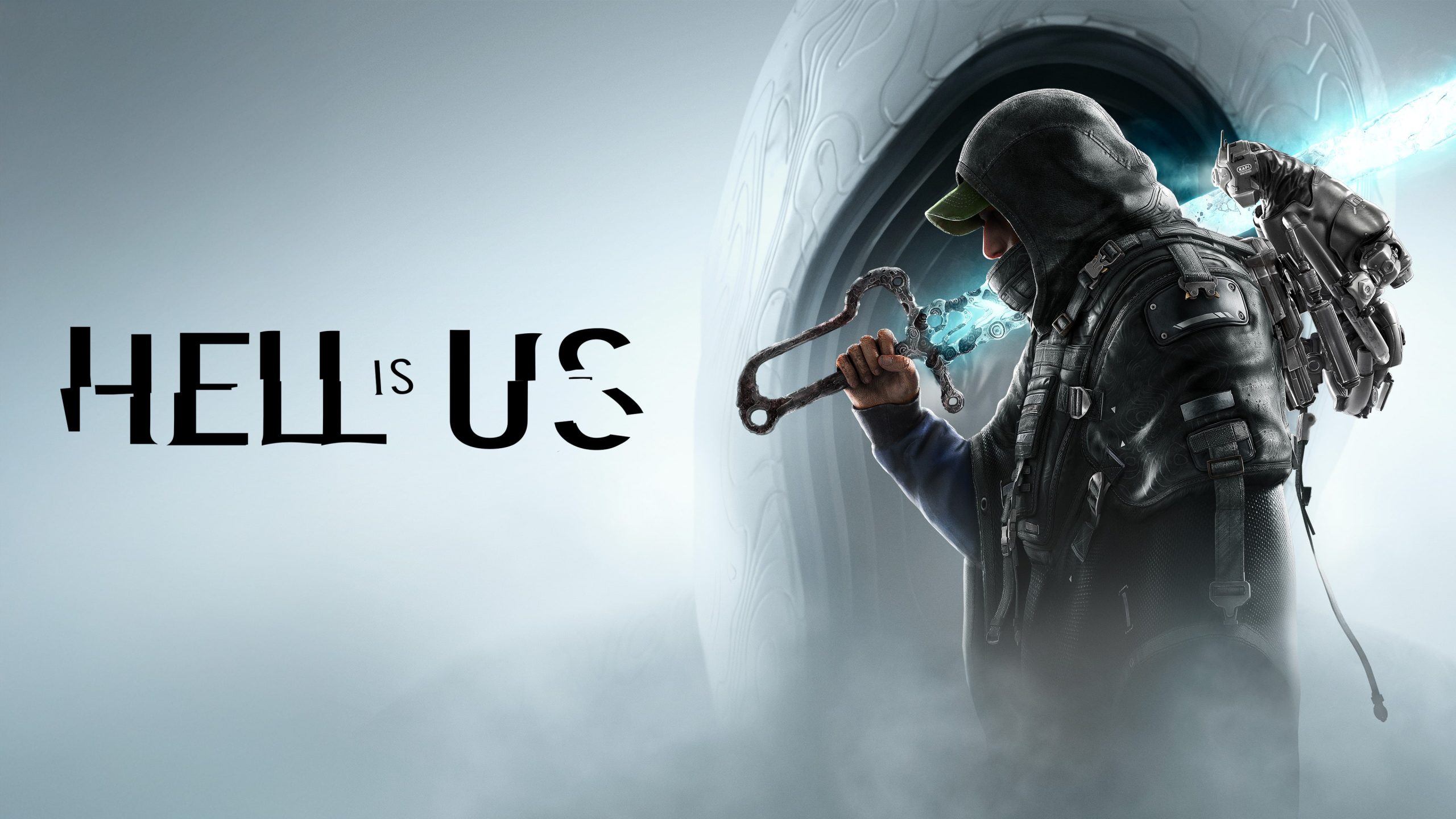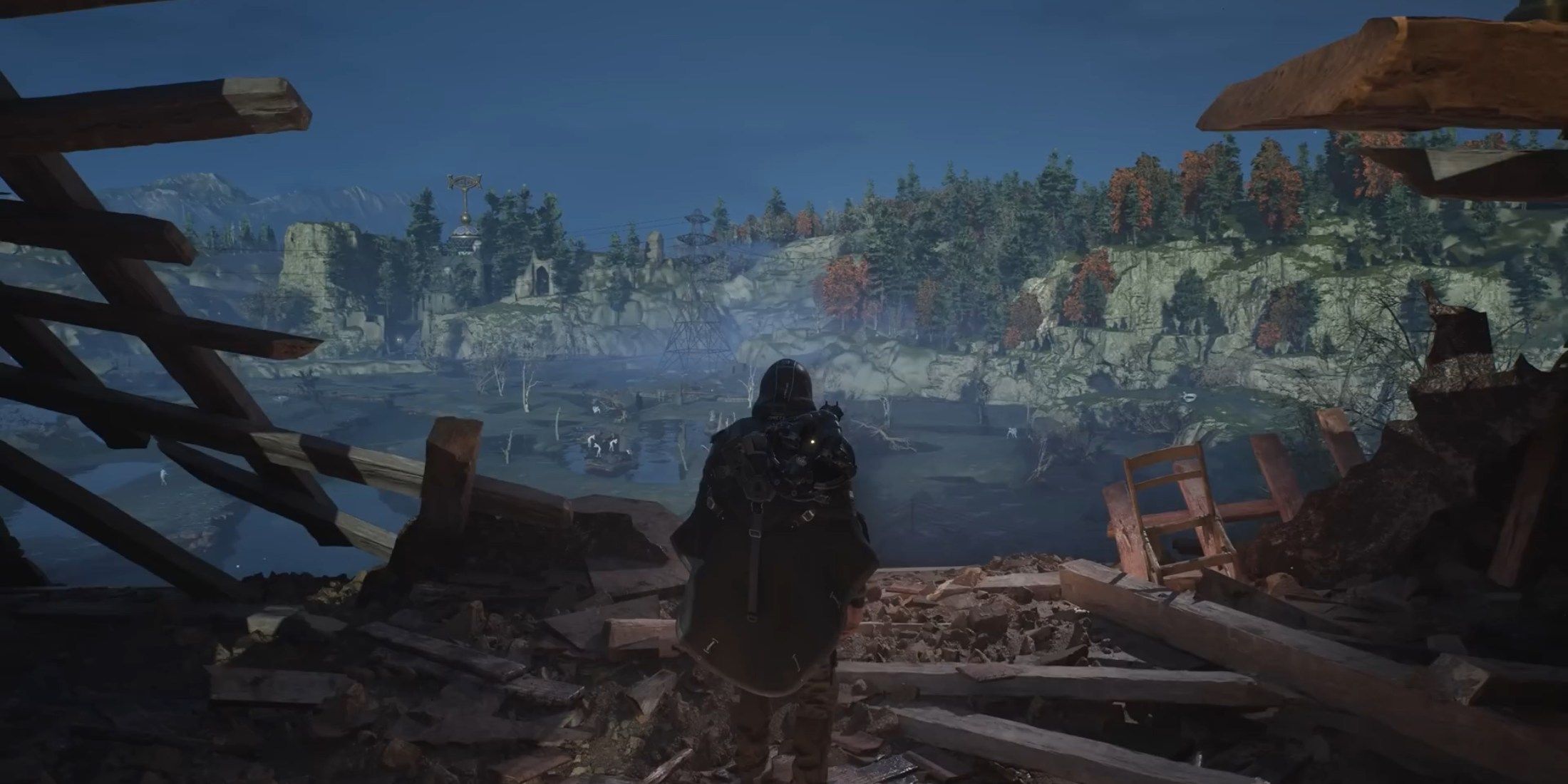It is well-known that video games are experiencing an existential crisis, arguably one of the most significant since their inception. With budgets continuing to expand over recent years, alongside a decreased willingness to take risks and the emergence of what I refer to as “New Asia,” capable of producing high-quality blockbusters faster and at a much lower cost, publishers are witnessing a genuine industry transformation. Additionally, there is the challenge of managing public expectations, which have grown increasingly weary of ready-made formulas that treat players like children. From this context, Hell Is Us was created by Rogue Factor studio, co-founded and led by Jonathan Jacques-Belletête, a veteran game developer who contributed to the highly acclaimed Deus Ex: Human Revolution. He and his small team recognized this paradigm shift within their evolving industry and understood that trusting in players’ intelligence is crucial. In summary, I spent nearly 4 hours playing Hell Is Us, recorded my gameplay experience, and here are my impressions on this open-world action RPG set to make a significant impact during the next school term.
It is important to clarify that “Hell is Us” is neither strictly categorized as a Souls-like nor an open-world game; the creators prefer to describe it as a semi-open world at most. The game aims to differentiate itself from other action-adventure titles by focusing on investigation and discovery, while also offering intense close-combat encounters and a stylistic approach that blends various genres. Within “Hell is Us,” players will experience constant shifts between medieval and science-fiction settings amidst the backdrop of an alternate European civil war from the 1990s. This genre fusion enables Rogue Factor’s game to establish its distinct identity. During my interview with Jonathan Jacques-Belletête, he drew parallels with Egypt’s history—a nation rich in antiquity yet capable of achieving modern and avant-garde feats still steeped in mystery today, such as the construction of pyramids. Additionally, “Hell is Us” unfolds in an alternate 1990s setting characterized by a tactical aesthetic suggesting technological regression, paying homage to Hideo Kojima’s style, particularly the “Metal Gear Solid” series, for its seamless integration of temporal elements and advanced military design.
REMI WITHOUT FAMILY
What does “Hell is Us” entail? It is a game set in Hadea, a fictional nation devastated by civil war and isolated from the rest of the world during the 1990s. The choice to place it in a fictional country was intentional on the part of its creator, Jonathan Jacques-Belletête, who aims to avoid issues related to real-world conflicts, particularly given current international tensions. We take on the role of Rémi, an exiled former soldier returning secretly to his homeland to find his parents after being exiled as a child. His past is clouded in mystery, with uncertain memories, and he urgently seeks to uncover what happened to him during his childhood. His return initiates a peculiar journey through ruined villages, broken soldiers, and hidden secrets. From the start, the atmosphere is established: hanged bodies, muddy swamps, melancholic violin music, creating a heavy, almost oppressive environment.
The objective of Hell Is Us, a game that does not cater to the player’s every need, represents a certain renewal in video games, is to consistently observe, listen, deduce, and even take notes. During our hands-on session at Nacon Connect, the creators provided us with a pen and notepad because the game requires players to retain information on their own that they gather within Hadea’s world. Indeed, in Hell Is Us, a basic objective like retrieving an engine key can evolve into a complex quest involving puzzles, tomb exploration, and cryptic dialogues. There are no GPS, maps, or indicators in the environments to guide players; it’s all about self-reliance, as Monique would say. During user testing, players quickly understood and appreciated this hands-off approach, encouraging the team to continue in this direction. While it may seem like a new game design philosophy of free exploration without excessive guidance or omnipresent directional arrows, in reality, it is a return to older practices. Jonathan Jacques-Belletête, the game’s designer, acknowledges that games from the ’80s and ’90s did not offer such assistance either; this approach in a semi-open world setting signifies a desire for renewal.
The goal is to restore confidence in the player, encourage observation, listening, and self-discovery. Additionally, by requiring players to look around, it slows down the pace, allowing for appreciation of environments and artists’ work while avoiding mindless chaining of missions following icons that might distract attention. In any case, all of Hell is Us has been designed this way, with subtle writing and dialogues systematically providing clues, but not turning every interaction into a quest objective.
NOT A SOULS-LIKE, NO
Beyond this modern approach to game design, Hell Is Us is also a challenging game in its combat mechanics. As mentioned previously, the developers avoid labeling their game as a Souls-like since battles are neither overly punitive nor excessively easy but rather midcore in difficulty. During our test session, we noticed that the difficulty was not properly calibrated; enemies were significantly tougher than expected for the final version, though options will allow you to reduce enemy aggressiveness. Regarding the game’s creatures, their design and appearance draw inspiration from science fiction films. Indeed, Jonathan Jacques-Belletête cites filmmakers like Alex Garland as sources of inspiration.
Their appearance has a certain specificity. The game’s creator shared with me that the enemies were designed as physical manifestations of human emotions. In fact, the team envisioned fractal, strange creatures carrying an emotional charge within them. This is where the idea of the Hollow Walker was born, a kind of emotional avatar linked to the human experience through a symbolic connection. Therefore, while the creative base of these creatures remains identical, they will differentiate themselves with other physical attributes, as well as their movement, mobility, and most importantly, their attack style.
“BLAME CANADA”
To defend himself against these creatures from elsewhere, Rémi relies solely on melee weapons, despite encountering factions with firearms in this fictional universe. These mystical beings are impervious to bullets; only the blade of ancient swords can subdue them. Rémi will have access to a variety of weaponry, including simple swords, halberds, double-headed axes, and rectangular blades, all of which can be upgraded. He can parry, dodge, and vary his attacks, with the option to utilize Limbic skills, found in the game as glyphs that increase weapon power. Additionally, Rémi has Kapi, a drone that acts both as an adventure companion and translator for ancient Hadean writings, assisting during encounters by distracting enemies or providing additional actions.
Regarding the gameplay, Hell is Us captivates players with its artistic flair, occasionally evoking a techno-thriller atmosphere. Jacques-Belletête, who served as art director for Deus Ex: Human Revolution and Mankind Divided, contributes his signature style to the game: visual coherence, elegant dystopian aesthetics, and retrofuturistic technology, which project a strong identity. However, this consistency is not perfectly maintained in some animations, suggesting a more modest budget. Despite this, Hell is Us remains above average, though it leans more towards an AA title than an AAA one. Designed with its budget constraints in mind, the game offers approximately 30 to 40 hours of gameplay at a price point that reflects these limitations.
At a time when video games seek new inspiration, Hell Is Us arrives as a refreshing addition. Raw, because it does not aim to soften its message or conceal its ambitions behind a veneer of comfort or ease. It is a game that dares to trust the player, preferring to spark curiosity rather than guide by the hand. In four hours of play, I experienced the rare sensation of rediscovering a form of freedom: the freedom to explore, get lost, think, and doubt. And in 2025, this became valuable. Not everything is perfectly polished yet, but the essentials are present: strong direction, a distinctive visual identity, and most importantly, a willingness to offer something different. If Hell Is Us fulfills its promises upon release, it could very well become one of those titles that surprises in 2025.
Have any thoughts?
Share your reaction or leave a quick response — we’d love to hear what you think!



